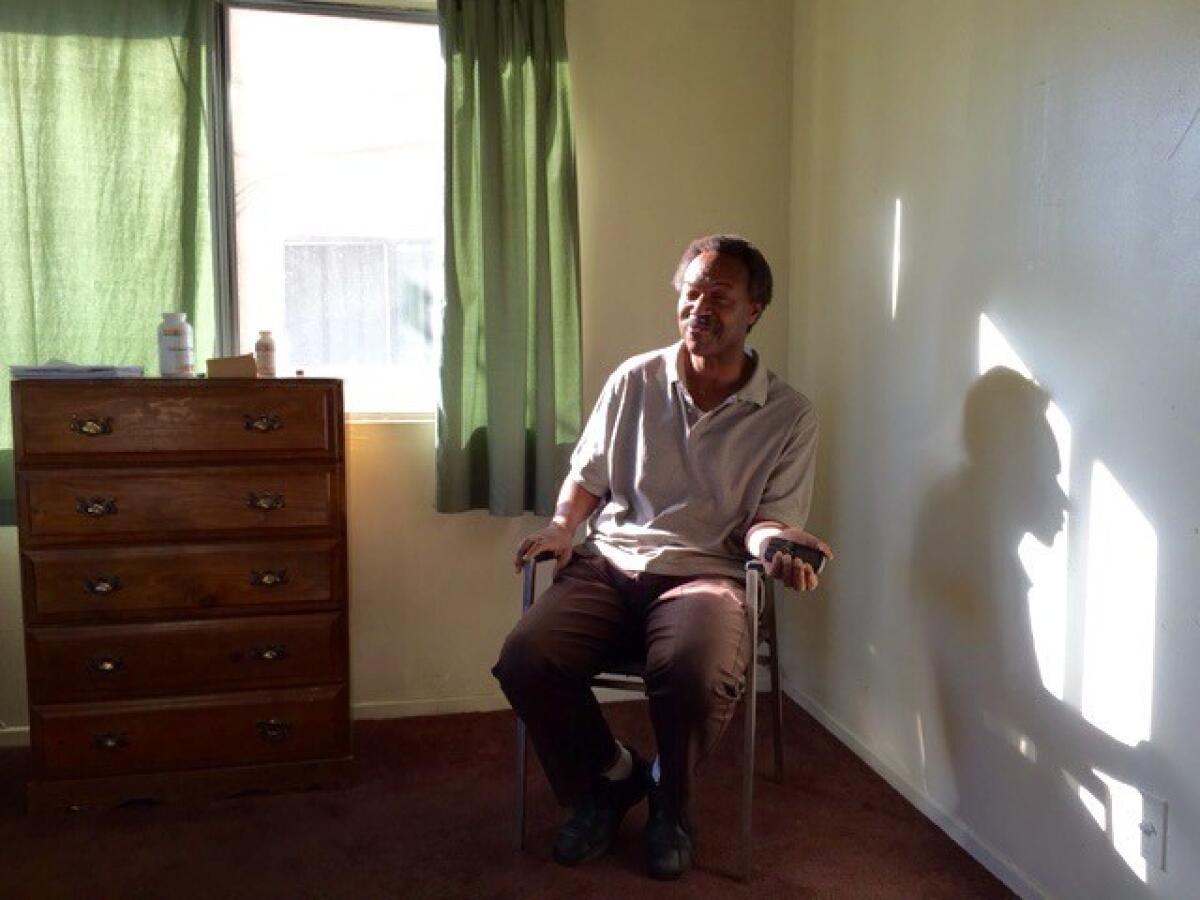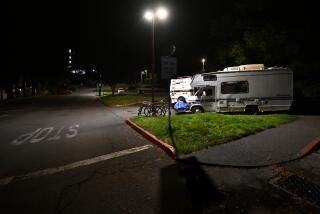Opinion: From a street corner to a room of his own -- starting the journey out of homelessness

James Lonon in his new room.
As volunteers fanned out across Los Angeles County last week to count homeless people, I knew of one homeless person in particular who had just days before escaped being counted on the streets.
I met James Lonon as he sat on a concrete bench on the corner of 22nd Street and Wilshire Boulevard in Santa Monica in mid-November of last year — about a month before he turned 56. He was neatly dressed, a small cart of belongings at his side and a crisp brown bag set up at his feet for offerings of cash from passers-by. He smiled warmly as I approached. I pulled a dollar out of my handbag and as I held it, ready to deposit it in his bag, I asked if he had a place to go that evening. I write about homelessness. I was curious.
“You mean, do I have a home to go to? No, I don’t,” he said.
On the corner, he was adept at making money and acquaintances. He had enough of an infrastructure -- cellphone, email address, a storage unit -- to ground him even on the street.
Well, I meant, would he be going to a shelter. But I was struck by how lucid he sounded, how rational he seemed. Sure, he was homeless. But by comparison, earlier that morning, I had passed a woman a block away sitting on the sidewalk conducting a loud and energetic conversation with herself, oblivious to people walking by.
We began chatting. He had been homeless a year, he told me, after his unemployment benefits ran out. In 2014, he lost a nine-year job as a clerk at a big retailer. He had a bachelor’s degree from Cal State Long Beach, he said.
On the street corner, he was adept at making money and acquaintances. He didn’t want to go to a shelter (most homeless people do not) and he had already been through a nonprofit program, he said, that offered a regimented group living arrangement. He didn’t want that either.
And he had enough of an infrastructure — a basic cellphone, an email address, a storage unit — to ground him even as he lived on the streets.
“All the people out here in Santa Monica — it would seem like they would have an empty room that they would offer to someone,” he said. He had enough cash to pay $200 a month for a room, he explained. “It’s just a waiting game — waiting for the right person who will respond to that type of request.”
I highly doubted any person was going to walk by and offer him a room for any amount of money. I didn’t know whether his story was credible or not.
What I did know was that officials of the city and county of Los Angeles are desperate to solve homelessness, spending tens of millions of dollars (and promising more) on programs and permanent supportive housing and transitional housing and rapid re-housing for homeless people with all kinds of backgrounds, disabilities and mental problems. Why couldn’t someone in that system find this man a room somewhere?
Someone did. Namely, Marsha Temple and her colleagues at the nonprofit Integrated Recovery Network. Today, Lonon has a room of his own in a six-bedroom apartment just west of USC that functions as transitional housing. Next week, he starts a part-time job.
This is just the beginning of Lonon’s new journey. Watching him take this on, I suspect, will reveal as much about him as it does about the system of government and nonprofit agencies that are trying to help homeless people.
Follow the Opinion section on Twitter @latimesopinion
More to Read
A cure for the common opinion
Get thought-provoking perspectives with our weekly newsletter.
You may occasionally receive promotional content from the Los Angeles Times.







